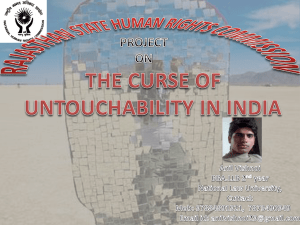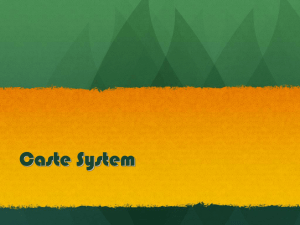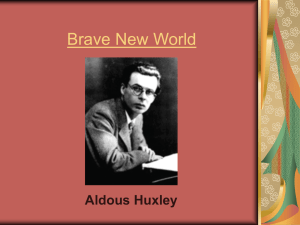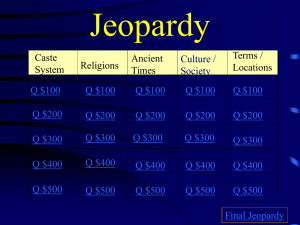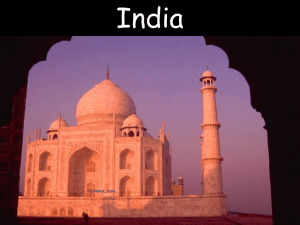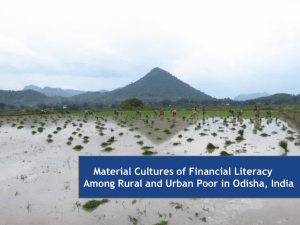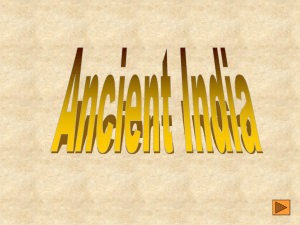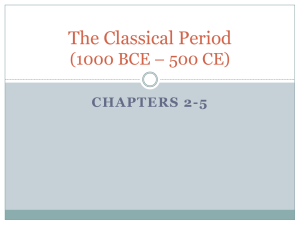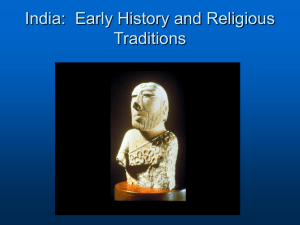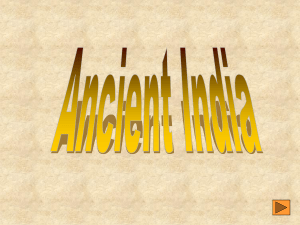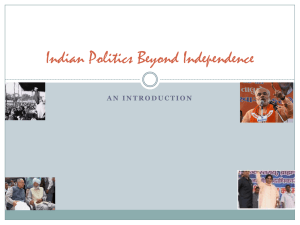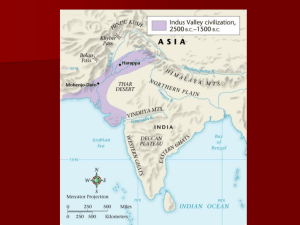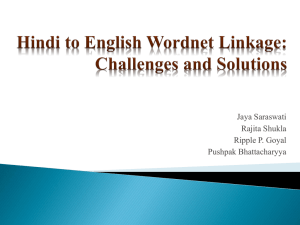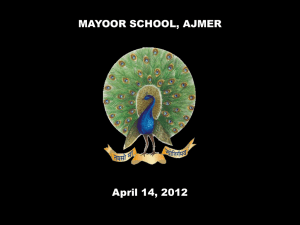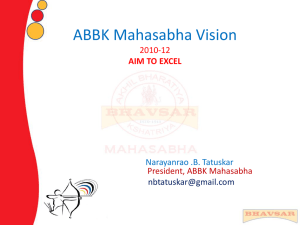Slide asdasd - kvelearning38
advertisement
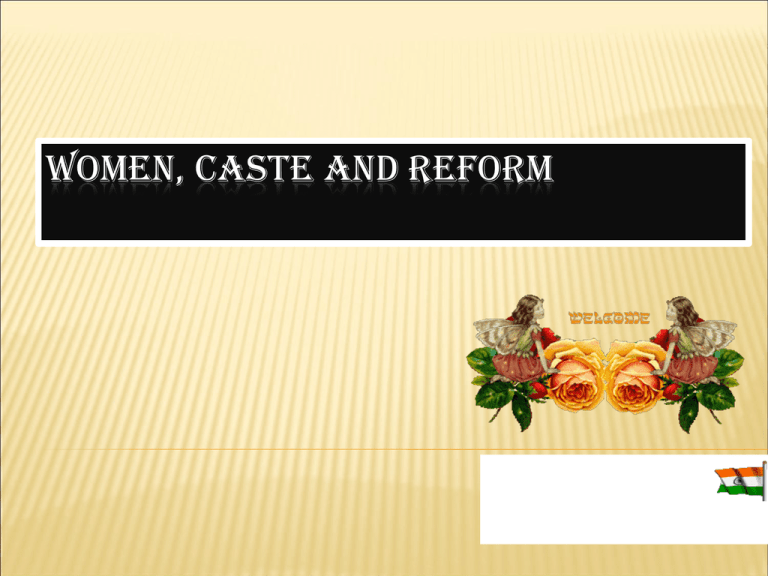
WOMEN, CASTE AND REFORM Module 1. SOCIAL EVILS 2. REFORM MOVEMENTS 3. REMOVAL OF UNTOUCHABILITY PRESENT Nowadays most girls from middle class families go to school , and often study with boys On growing up, many of them go to colleges and universities , and take up jobs after that. They have to be adults before they are legally married, and according to the law, they can marry anyone they like. All women, like all men can vote and stand for elections. PAST In the past most children were married of at an early age. In some parts of the country, widows were praised if they chose death by burning themselves on the funeral pyre of their husbands, this was called “sati”. In many parts of the country people believed that if a woman was educated, she could become a widow. In most region, people were divided along lines of caste. SATI Nov. 30,1818. Conference Between an Advocate for, and an Opponent of, the Practice of Burning Widows Alive . Advocate.—I am surprised that you endeavour to oppose the practice of Concremation and Postcremation of Widows,1 as long observed in this country. Opponent.—Those who have no reliance on the Shastru, and those who take delight in the selfdestruction of women, may well wonder that we should oppose that suicide which is forbidden by all the Shastrus, and by every race of men. Advocate.—You have made an improper assertion, in alleging that-When a widow is absent from her husband at the time of his death, she may in certain cases burn herself along with some relick representing the deceased. This practice is called Unoomurun or Postcremation. CASTE DIVISION Brahmans and Kshatriyas considered themselves as “upper castes”. Traders and moneylenders were placed after them and were known as “vaishyas”. Peasants and artisans such as weavers and potters were referred to as “shudras”. At the lowest place were those who labored to keep cities and villages clean and they were known as “untouchables”. CASTE DIVISION UNTOUCHABLES • • Untouchables were not allowed to enter temples, draw water from wells used by the upper castes, or bath in the pond were upper caste bathed. They were seen as inferior human beings. MADIGAS-LEATHERWORKERS REFORMERS People are described as reformers because they felt that changes were necessary in society, and unjust practices needed to be done away with. They thought that the best way to ensure such changes was by persuading people to give up old practices and adopt a new way of life. INDIAN REFORMERS RAJA RAMMOHUN ROY ISHWARCHANDRA VIDYASAGAR VEERASALINGAM PANTULU SWAMI DAYANAND SARASWATI MUMTAZ ALI TARABAI SHINDE PANDITA RAMABAI PERIYAR SHRI NARAYANA GURU JYOTIRAO PHULE B.R AMBEDKAR RAJA RAMMOHUN ROY Raja Rammohun roy formed a reform association known as The Brahmo Sabha in Calcutta. Rammohun roy was keen to spread the knowledge of western education in the country. He began a campaign against the practice of Sati. He tried to show in his writings that widow burning had no sanction in ancient texts. Many British officials were more than willing to listen to Rammohun who was reputed to be a learned man. In 1829 sati was banned. SAINTS ON SATI 'That woman who, on the death of her husband, ascends the burning pile with him, is exalted to heaven, as equal to Uroondhooti. 'She who follows her husband to another world, shall dwell in. a region of joy for so many years as there are hairs in the human body, or thirty-five millions. 'As a serpent-catcher forcibly draws a snake from his hole, thus raising her husband by her power, she enjoys delight along with him. 'The woman who follows her husband expiates the sins of three races; her father's line, her mother's line, and the family of him to whom she was given a virgin. 'There possessing her husband as her chiefest good, herself the best of women, enjoying the highest delights, she partakes of bliss with her husband as long as fourteen Indrus reign. 'Living let her benefit her husband; dying she commits suicide.' RAJA RAMMOHUN ROY ISHWARCHANDRA VIDYASAGAR Ishwarchandra vidyasagar, used the ancient texts to suggest that widows should remarry. His suggestion was adopted by British officials and a law was passed in 1856 permitting widow re-marriage. Vidyasagar in Calcutta set up schools for girls. ISHWARCHANDRA VIDYASAGAR VEERASALINGAM PANTULU In the telugu speaking areas of the madras presidency, veerasalingam pantulu formed an association for widow re-marriage. VEERASALINGAM PANTULU SWAMI DAYANAND SARASWATI Swami dayanand saraswathi formed an association called arya samaj. He believed infallibility of the vedas. He was against idol worship. He supported widow re-marriage and wanted women to be educated. SWAMI DAYANAND SARASWATI GIRLS START GOING TO SCHOOL Many reformers in Bombay set up school for girls. When the first schools were opened in the mid nineteenth centaury, many people were afraid of them. Many people felt that schools would take girls away from home, prevent them from doing the domestic duties. Moreover, girls had to travel through public places in order to reach school. Many people felt that this could have a corrupting influence on them. Therefore, throughout the nineteenth century, most educated woman were thought at home by liberal fathers or husbands THE FIRST INDIAN GIRLS SCHOOL MUMTAZ ALI Mumtaz interpreted verses from the koran. She wanted all women to be educated. She encouraged women to learn both religion and a language to understand the outside world. WOMEN WRITE ABOUT WOMEN Indian women began to enter in universities. Some of them trained to be doctors and some became teachers. Many women began to write and publish their critical views on the place of women in society. Tarabai shinde,a woman educated at home at poona, published a book, stripurushtulna criticizing the social differences between women and men. STRIPURUSHTULNA-TARABAI SHINDE PANDITA RAMABAI Pandita Ramabai, a great scholar of Sanskrit, felt that Hinduism was oppressive towards women. She wrote a book about the miserable lives of upper caste Hindu women. She founded a widows home at Poona to provide shelter to widows who had been treated badly by the husbands relatives. She wanted women to be educated so that they could support themselves economically. PANDITA RAMABAI DRAWBACKS Many Hindu nationalist felt that Hindu women were adopting western ways and that this would corrupt Hindu culture and erode family values . Orthodox Muslims were also worried about the impact of these changes. WOMEN WORKING FOR REFORM Women themselves were actively working for reform. They wrote books, edited magazines, founded schools and training centers, and set up women's association. They formed political pressure groups to push through laws for female suffrage and better health care and education for women. Nationalist promised that there would be full suffrage for all men and women after independence. CASTE AND SOCIAL REFORM The Prarthana samaj adhered to the tradition of bhakti that believed in spirtual equality of all castes. In Bombay, the Paramhas Mandali was founded in 1840 to work for the abolition of caste. Many of these reformers and members of reform association were people of upper castes. Often, in secret meeting, these reformers could violate caste taboos on food and touch, in an effort to get rid of the hold of caste prejudice in their lives. Christian missionaries began setting up schools for tribal groups and low caste children. DUBLAS OF GUJRAT THE DEMAND FOR LABOUR The poor began leaving their villages to look for jobs in the cities. Expansion of cities leaded to new demands for labour. For the work coolies, diggers, cleaners, sweepers, brick layers were required. This labour came from the poor from villages and small towns who came to the cities in search of work. A number of Mahar people, who were regarded as untouchable, found jobs in the Mahar regiment. THE DEMAND FOR LABOUR DEMANDS FOR EQUALITY The Satnami moment in central India, founded by a leader named Ghasidas who came from a lower caste, worked among the leather workers and organised the moment to improve their social status. In eastern Bengal, Haridas Thakur’s Matua sect worked among low caste Chandala cultivators. Haridas questioned brahmanical text that supported the caste system. HARIDAS THUAKUR SHRI NARAYANA GURU In what is present day kerala, a guru from among low caste ezhavas, shri narayana guru, proclaimed the ideals of unity of all people within one sect, a single caste and one guru. SHRI NARAYANA GURU JYOTIRAO PHULE One of the most vocal amongst the low caste leaders was jyotirao phule. He set out to attack the Brahman's claim that they were superior to others, since they were aryans. Phule argued that aryans were foreigners, those who came from outside the subcontinent. As the aryans established the dominance, they began looking at the defeated population as inferior and the upper caste people had no right to their land and power. The satyashodhak samaj, and association phule founded, propagated caste equality. In 1873 phule wrote a book called gulamgiri which he dedicated to all the americans those who had fought to free slaves. He was concerned about the plight of the upper caste women. JYOTIRAO PHULE B.R AMBEDKAR Ambedkar was born into a Mahar family. As a child he experienced what caste prejudice meant in everyday life. In school he was forced to sit outside the classroom on the ground, and was not allowed to drink water from taps that upper caste children used. In 1990 ,he wrote extensively about upper caste power in contemporary society. B.R AMBEDKAR In 1927 Ambedkar started a temple entry movement, in which his Mahar caste followers participated. Ambedkar led three such movements for temple entry between 1927 and 1935. His aim was to make everyone see the power of caste prejudice within society. TEMPLE ENTRY MOVEMENT PERIYAR E.V Ramasamy Naicker or Periyar as he was called ,came from middle-class family. He became a member of the congress only to leave it in disgust when he found that at a feast organised by nationalists, seating arrangements follow caste distinction-that is the lower castes were made to sit at a distance from the upper castes. Convinced that untouchables had to fight for their dignity , Periyar founded the self respect movement. He said that Hindi scriptures had been used to establish the authority of Brahmans over low castes and the domination of men over women. E.V.R PERIYAR Men should not touch each other, see each other; and cannot enter temples, fetch water from the village pond: in a land where such inhuman practices are ripe, it is a wonder that the earthquakes have not destroyed us, volcanoes not burnt us; it is a wonder that the earth has not split at its heart and plunge this land into an abyss, that a typhoon has not shattered us. I leave it to you to decide if you still like to trust to a divinity that has not punished us thus; if you still consider that God a just God, a Merciful Being. How long do you desire a vast section of the oppressed, the depressed classes to remain patient, peaceful and quiet? Would you consider it wrong if these oppressed were to choose death rather than lead such a life as they do now? " Periyar E. V. Ramasami HOOK SWINGING FESTIVAL In this popular festival, devotees underwent a peculiar form of suffering as part of ritual worship. With hooks pierced through their skin they swung themselves on a wheel. This act also was banned by the british. HOOK SWINGING FESTIVAL QUESTIONS 1. Who was the founder of Brahmo Samaj ? 2. In which year was the practice of sati banned ? 3. Who established a widow home in Pune ? 4. What did Raja Ramohun Roy do to end the practice of Sati ? 5. Why were changes necessary in Indian society ? 6. How did women involve themselves in their upliftment ? 7. Who were Madigas ? 8. Who published the book named Sripurushtulna ? What was it about ? 9. What was the Satyashodhak Samaj ? Who founded it ? 10. Name the hindu scripture that was criticised by periyar .
